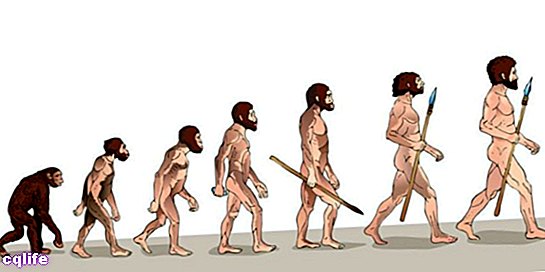We explain what the human being is, to which species it belongs and its characteristics. In addition, the various theories about its origin.

What is the human being?
When we speak of the human being or directly of the human, we refer to our species: theHomo sapiens (from the Latin "wise man"), belonging to the order of the primates and the hominid family, creators of the civilization that today dominates and transforms the planet Earth.
The oldest evidence of human activity on the planet dates back to 315,000 years, and is found in Morocco. At that time, ours was just one species among several of the genreHomo, highly diversified and whose other species have already become extinct.
After the disappearance ofHomoneardentalis (the "man of the Neanderthal") 28,000 years ago and fromHomofloresiensis (the "man with flowers" or Hobbit) approximately 13,000 years ago, we are the only species of the genus that survives.
The human being is distinguished based on his bodily features (bipedal, with useful upper joints, able to walk upright and with scant fur), but also on his inventiveness and intelligence, which distinguishes him from the rest of the higher animals.
In particular his ability to language articulated, for the thought complex and abstract, and for the transformation of the environment that surrounds it.
However, human beings have defined ourselves philosophically in very different ways throughout our lives. history, as we have created and demolished religions, social orders and interpretations of the world, in search of answers to our essential questions about the origin and meaning of existence, or the final destination of it.
In some contexts the term “man”As a synonym for human being, but such use is rejected due to its ambiguity, since it also designates adult male individuals.
Origin of the human being

The origin of our species has been the subject of debate throughout the history of the humanity, initially having mythical or magical-religious explanations according to the various cultural trends that exist, in what has been called thecreationism: the theory that human beings are the work of a God or a supernatural or sacred will that gave us the gift of intelligence and with which we are, therefore, in debt. It is the position still held by numerous religious groups, who prefer to interpret the content of their sacred texts to the letter, such asThe Bible.
However, as a result of the emergence of Sciences and rationalist discourse, more and more possible explanations of a scientific nature were remembered, until the Lamarck's Theory of Evolution In the nineteenth century, the first attempt to explain the origin of the life Through the transmission of acquired characters, that is, that a life inherited to its descendants the things learned or acquired during the course of its existence.
Then the book would comeThe origin ofandspecies by Charles Darwin, whose theories were perfected by later scientists, where it is proposed that life evolves based on slow changes and the pressure of natural selection.
In fact, Darwin's second book already addressed the issue of human origin (The origin of the man, 1871), in which it was proposed for the first time that man evolutionarily descended from some simpler form of existence, with which he would still have many characteristics in common: primates.
This does not mean that "the human comes from the ape", as many explain it, but that being human is a direct relative of the more modern species of primates, which, pressed by the environment and due to historical needs, they were acquiring greater and greater capacities (walking upright, opposable thumbs, use of tools, fire management) and thus giving rise to more and more new species, the last of which is, precisely, the human.
